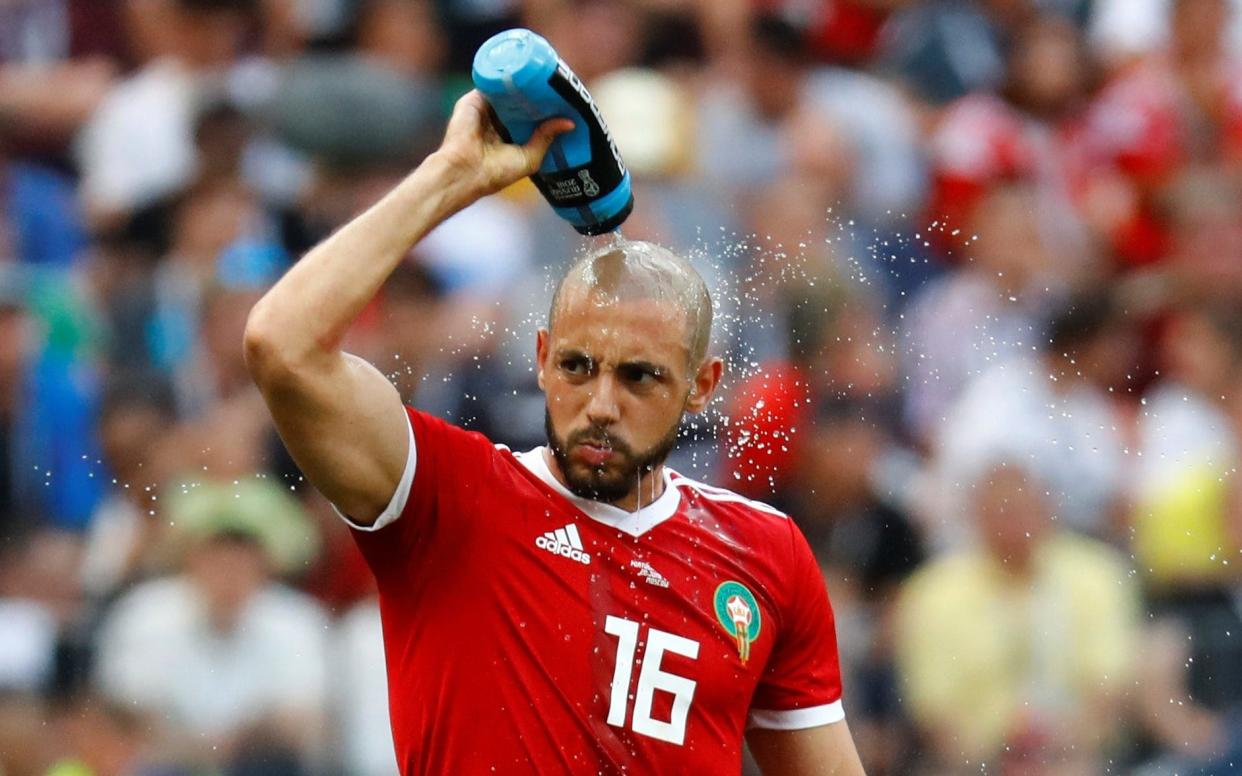Footballers' playacting hampered official FIFA study into concussion during World Cup, report says

Footballers' feigning injury hampered an official FIFA study into concussion during last summer's World Cup, a new report has found.
Researchers who reviewed every head injury incident during games in Russia found new concussion protocols were "ineffective" in almost two thirds of matches at the tournament.
New rules allowed referees to stop a game for three minutes while players with signs of concussion received treatment from a physiotherapist. They also allowed a second medic to view replays and assist with decision making.
But the study pointed out that "gamesmanship" was a limitation to the work. The study, published in the journal Jama Neurology, said video observation was "insufficient" to diagnose a concussion as "some players may have been feigning injury".
Overall, the rate of teams failing to follow guidelines after head clashes was marginally higher than the previous World Cup in 2014, when concussion was a major controversy.
In the 2014 final, Germany midfielder Christoph Kramer collapsed 14 minutes after being involved in a collision, saying afterwards: “I don’t know anything from the first half.”
The furore prompted Fifa to change its head-injury protocols in time for this summer’s tournament, but ignored calls for rugby-style concussion time-outs.

The report, by the New York Hospital for Special Surgery, found that in 20 per cent of potential concussion incidents in Russia, players were only assessed by a teammate or not looked at at all.
Co-author Dr Ajay Premkumar, from the New York Hospital for Special Surgery, said: "During the 2018 World Cup, Fifa's own concussion protocol was not followed in at least 63.3% of head collision events that resulted in two or more signs of concussion, a rate slightly higher than but similar to that of the 2014 World Cup.
"When evaluation did occur, the average length of on-field assessment was less than one minute and not standardised. It appears that Fifa's concussion policy changes did not lead to enhanced concussion management on the field, and its absence has thus rendered these policy changes ineffective."
He added: "Furthermore, health care personnel cannot reliably distinguish a concussion from gamesmanship without evaluating the player. Thus, all players should be evaluated when exhibiting signs of concussion."
One a player has been looked at by physios, they can only continue with their permission.
Four trained reviewers identified head collisions through review of video footage of all 64 games of the tournament for the study.
A total of 95 players suffered 115 head clashes across 111 incidents during the tournament. Some 90 players showed two or more signs of concussion, but only 33 of those were evaluated by a physiotherapist, the research found.
Of the rest, 39 were evaluated by the referee and 18 were checked over by another player or not at all.
Symptoms outlined by Fifa included disorientation, clutching of the head, a loss of balance and more than five seconds on the ground after contact.
Others include a blank or vacant look, visible facial injury, loss of consciousness or unresponsiveness, motor incoordination and impact seizure.
Dr Premkumar said: "Concussion assessment and management in international football continues to have significant room for improvement."

 Yahoo News
Yahoo News 
